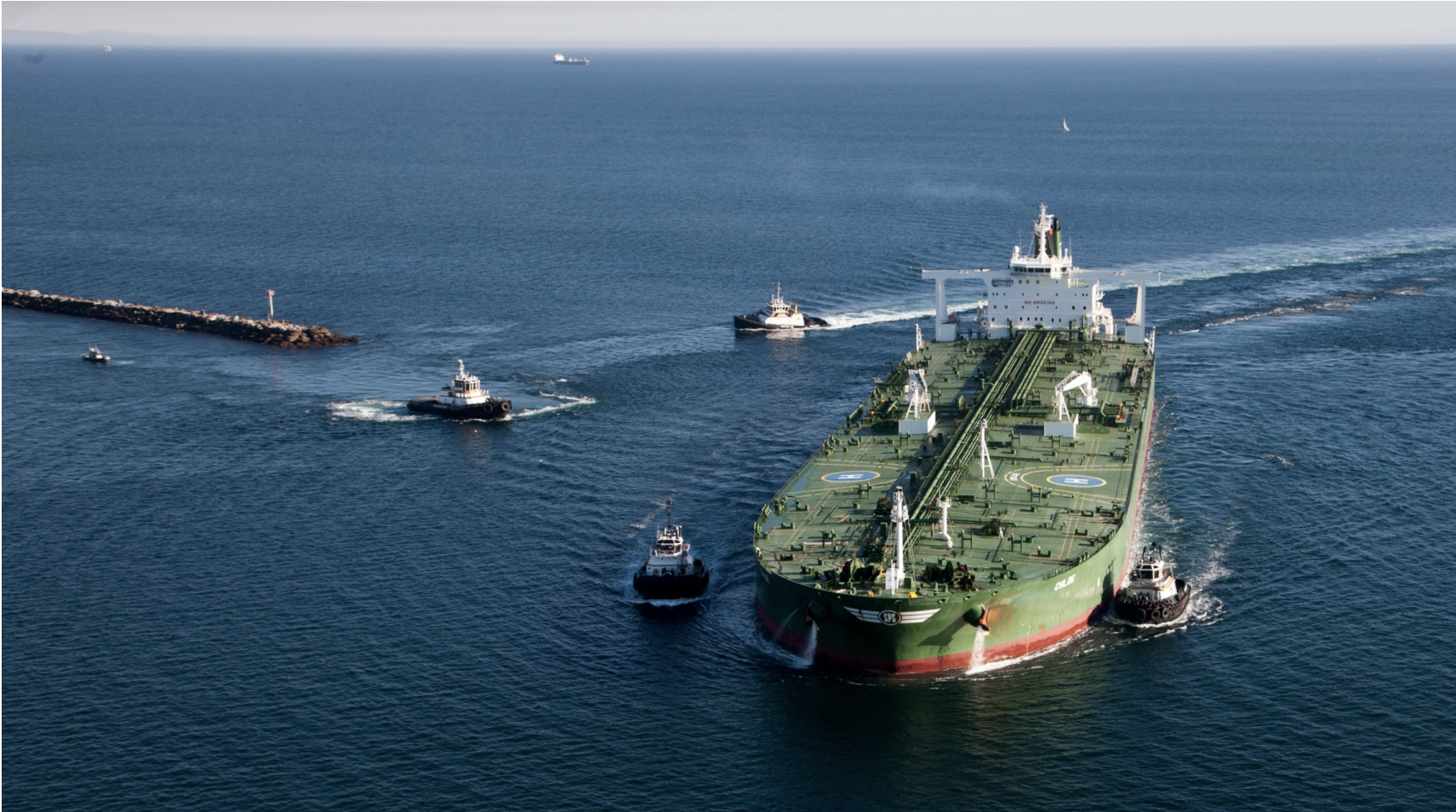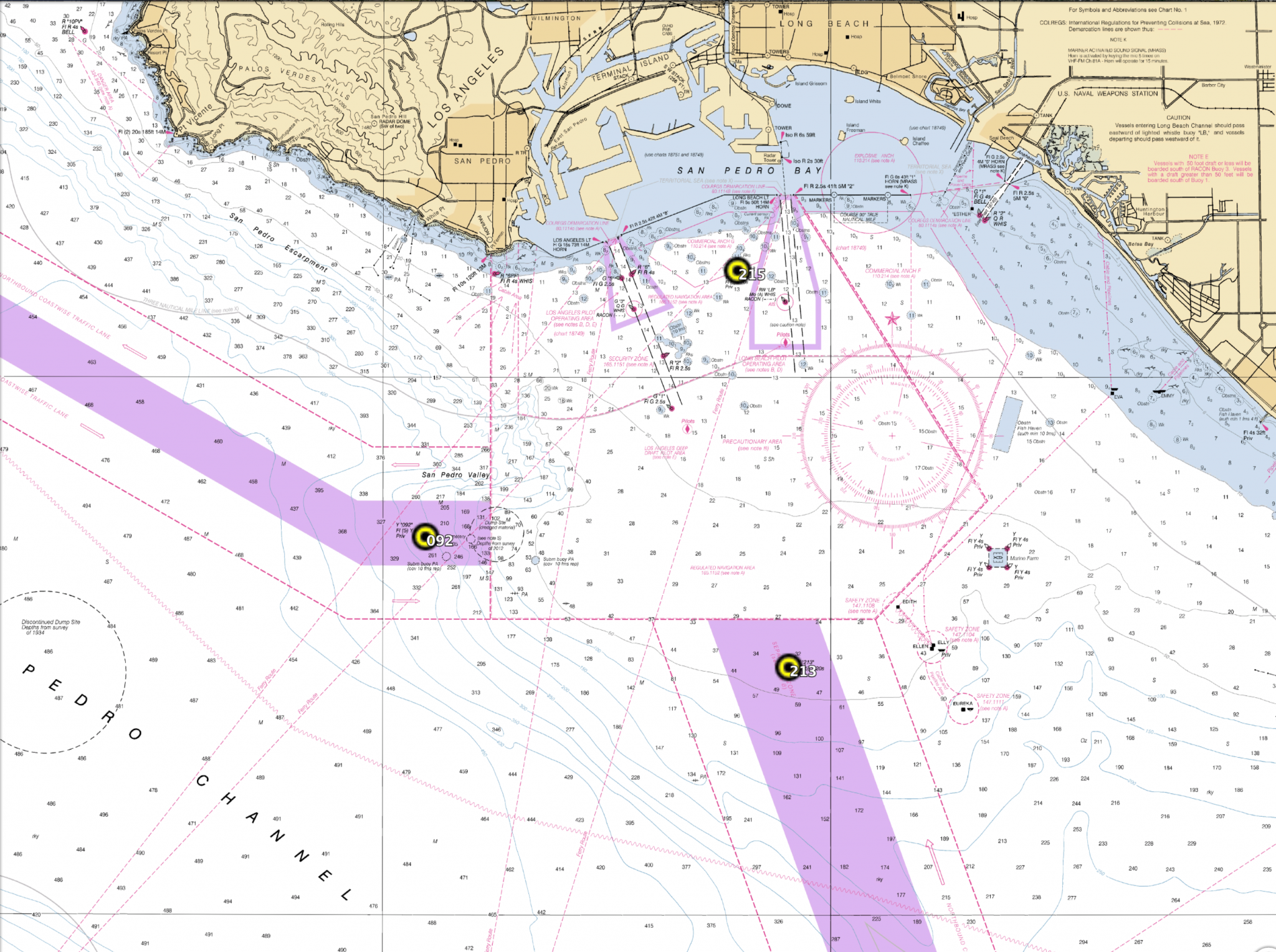The Under Keel Clearance (UKC) Project is a long-standing public-private partnership between CDIP, the Marine Exchange, PROTIDE, and SCCOOS. UKC improves local swell models at the Port of Los Angels and Long Beach (POLA/LB) harbor entrance, where three wave buoys (with one buoy supported by IOOS via SCCOOS) are critical to delivering customized information to ship captains and harbor pilots. Maximum operational vessel draft has increased by four feet, thereby decreasing the number of vessels lightering, which means less fuel consumption, quicker loading/offloading (more revenue) and improved working conditions.
Location
The Ports of LA and LB are the #1 and #2 container ports in the U.S. and ranked #9 in the world. The POLA/LB collectively regulates the entry of trans-Pacific trade to the U.S. to the tune of over $170 billion annually, supporting more than 575,000 Southern California jobs and importing over 30% of U.S. goods. The 3 CDIP wave buoys, San Pedro (092), San Pedro South (213) and Long Beach Channel (215) provide data coverage for the CDIP wave model for this important harbor.Observations
These buoys are positioned to measure swell waves coming from the south, west, and northwest, as well as locally generated wind swell, which have different impacts on the approach to the harbor. Swell is important as this causes vessels to pitch and roll. This motion could cause the vessel to hit the seafloor when transiting through the harbor entrance, given the limited clearance between the relatively shallow channel depth and deep vessel draft.The decision for a vessel to transit the harbor entrance takes into account many factors, including water level, ocean currents, wave conditions, channel depth, vessel course and speed, as well as the vessel dimensions. These factors are incorporated into the PROTIDE program. PROTIDE computes vessel motion based on these factors, and calculates the under keel clearance and probability of touching the seafloor.



